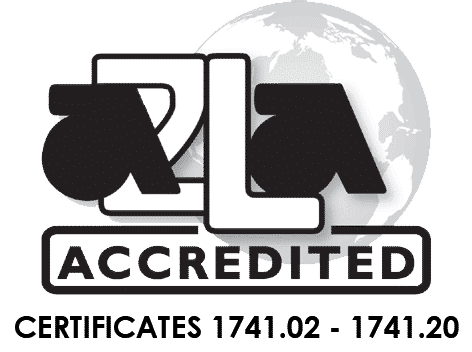Industrial Terminology Glossary – L
Latch
A mechanism with a lever that is used to keep a door or gate closed in metrology, typically refered to with regard to an oven, autoclave, or other equipment requiring controlled temperature or substances to be contained within a chamber.
Latching Relay
A relay which stay in either the on or off position until a button is pushed or a task is completed
Laws of Thermodynamics
The first law, also known as Law of Conservation of Energy, states that energy cannot be created or destroyed in an isolated system. The second law of thermodynamics states that the entropy of any isolated system always increases.
An electronic testing device used to gauge the inductance (L), capacitance (C), and resistance (R) of an electronic component. Read More…
Lead Gage
Inspects thread lead using contact points that seat in the threads of a part.
Lead Length Consideration
Consideration of the total effect of resistance in an electrical system due to lead length. Longer leads have more resistance, which can affect the accuracy of small current transformers, DC shunts, low voltage analog voltmeters, and other electrical systems. In many cases, the manufacturer has considered lead length as a part of their accuracy specification, and use of longer leads may result in readings outside the manufacturer’s specifications.
Leak Tester
An instrument that applies pressure or vacuum to a chamber in a manufactured product to ensure that the chamber is airtight.
Least-Significant Digit (LSD)
The digit which, when changed, represents the smallest change in numerical value, located at the far right of the number string. Many manufacturers use this as a component of their specifications, abbreviated LSD.
Level
Device, usually consisting of a gas bubble in a glass tube filled with fluid, used to determine how close a surface is to being perpendicular to gravity. Digital levels are also available for applications which require greater precision.
Lever
A bar resting on a pivot point that can be used as a tool to transfer force. Commonly referred to or utilized in torque measurement with torque multipliers to gain greater leverage.
Light Emitting Diode (LED)
A semiconductor diode which glows when charged, emitting either infrared, visible or ultraviolet light.
Small, handheld devices designed for the precise measurement of light levels. These compact instruments are equipped with a light-detecting sensor that efficiently captures ambient light. Read More…
Limits of Error
The maximum and minimum possible outcomes when taking all sources of error into account.
Linearity
Linearity is the property of a mathematical relationship or function which means that it can be graphically represented as a straight line. In the case of calibrated equipment, linearity refers to the tendency of calibration test results to plot as a straight line on a graph where the value is treated as the y axis and expected value is plotted as the x axis.
Linearity Calibration (scales)
Calibrating a scale at the minimum, middle and maximum capacity to ensure linearity and accuracy
Liquid Crystal Display (LCD)
Flat screens that use the light-modulating properties of liquid crystals to bend light and make a display in color or monochrome. LCD’s don’t directly emit light, but rather rely on a backlight or reflector.
Live load
A moveable, inconstant load. In structural engineering, a live load refers to the people or goods inside a structure. In scale calibration, the live load is the weights added to the pan to verify measurement accuracy.
A precise instrument used to measure an object’s weight or applied force, converting this physical input into an electrical signal. Read More…
Loop Calibrator
A type of electrical calibrator specifically designed to troubleshoot 4-20 mA current loops.
Loop Resistance
The electrical resistance, in ohms, of a complete circuit exclusive of an instrument’s internal resistance.
Low Pass Filter
A filter which blocks high-frequency signals and allows low-frequency signals to pass.
LS-TTL Compatible
For LS-TTL compatible digital input circuits, a logic 1 is obtained for inputs of 2.0 to 5.5V, which can source 20 µA, and a logic 0 is obtained for inputs of 0 to 0.8V which can sink 400 µA. For digital output signals, a logic 1 is represented by 2.4 to 5.5V with a current source capability of at least 400 µA; and a continued – logic 0 is represented by 0 to 0.6V with a current sink capability of at least 16 mA. “LS” stands for low-power Schottky.
LS-TTL Unit Load
A load with LS-TTL voltage levels, which will draw 20 µA for a logic 1 and -400 µA for a logic 0.

